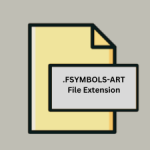.ODI File Extension

OpenDocument Image
| Developer | OASIS |
| Popularity | |
| Category | Raster Image Files |
| Format | .ODI |
| Cross Platform | Update Soon |
What is an ODI file?
Files with the .ODI extension belong to the OpenDocument format, specifically used for storing images.
The OpenDocument format is an open standard for office documents, including text documents, spreadsheets, presentations, and images. It promotes interoperability and ease of access across different software applications.
More Information.
The OpenDocument format, including its image component ‘.ODI’, was first introduced in 2005 with the release of OpenDocument 1.0.
Its primary purpose was to provide a standardized way to store and exchange office documents, including text documents, spreadsheets, presentations, and images.
This format aimed to promote transparency, accessibility, and long-term preservation of digital documents.
Origin Of This File.
The OpenDocument format, including .ODI for images, emerged from the need for a standardized, open-source alternative to proprietary document formats.
It was developed by the Organization for the Advancement of Structured Information Standards (OASIS) and gained ISO/IEC standardization in 2006, making it a reliable choice for cross-platform document interchange.
File Structure Technical Specification.
The ‘.ODI’ file format follows the specifications outlined in the OpenDocument standard. It typically consists of structured XML data that defines various attributes and elements related to the image content.
This XML structure allows for embedding metadata, formatting details, and other relevant information within the image file itself, ensuring comprehensive document management capabilities.
Technically, an ‘.ODI’ file may contain:
- Image data encoded in a standard format like PNG, JPEG, or SVG.
- Metadata describing the image properties, such as resolution, color depth, and author information.
- Styling information if applicable, allowing for consistent rendering across different applications that support OpenDocument formats.
How to Convert the File?
Converting ‘.ODI’ files to other image formats like JPEG, PNG, or TIFF can be achieved using various software tools and online converters. Here’s a general process:
- Using Software: Open the ‘.ODI’ file in an application that supports OpenDocument formats, then export or save the image in the desired format through the application’s export functionality.
- Online Converters: There are numerous online tools that specialize in converting document formats. Upload the ‘.ODI’ file to the converter, select the output format (e.g., JPEG), and download the converted file.
Advantages And Disadvantages.
Advantages:
- Interoperability: ‘.ODI’ files can be opened and edited by various office productivity software that supports OpenDocument formats, promoting compatibility.
- Data Integrity: The use of XML-based structure enhances data integrity by embedding metadata and formatting details within the file itself.
- Long-Term Accessibility: Being an open standard, ‘.ODI’ files are less prone to obsolescence compared to proprietary formats, ensuring long-term accessibility of stored image data.
Disadvantages:
- Limited Adoption: Despite being an open standard, the adoption of OpenDocument image format ‘.ODI’ may vary across different software applications, potentially limiting its utility in certain environments.
- Complexity: The XML structure and comprehensive metadata may introduce complexity, making it less straightforward for casual users or applications with minimal support for XML parsing.
How to Open ODI?
Open In Windows
- Use applications like LibreOffice or OpenOffice, which are free and support OpenDocument formats including ‘.ODI’.
Open In Linux
- Most Linux distributions come with LibreOffice pre-installed, which can handle ‘.ODI’ files seamlessly.
Open In MAC
- Similarly, LibreOffice or OpenOffice can be used on macOS to open and edit ‘.ODI’ files.













